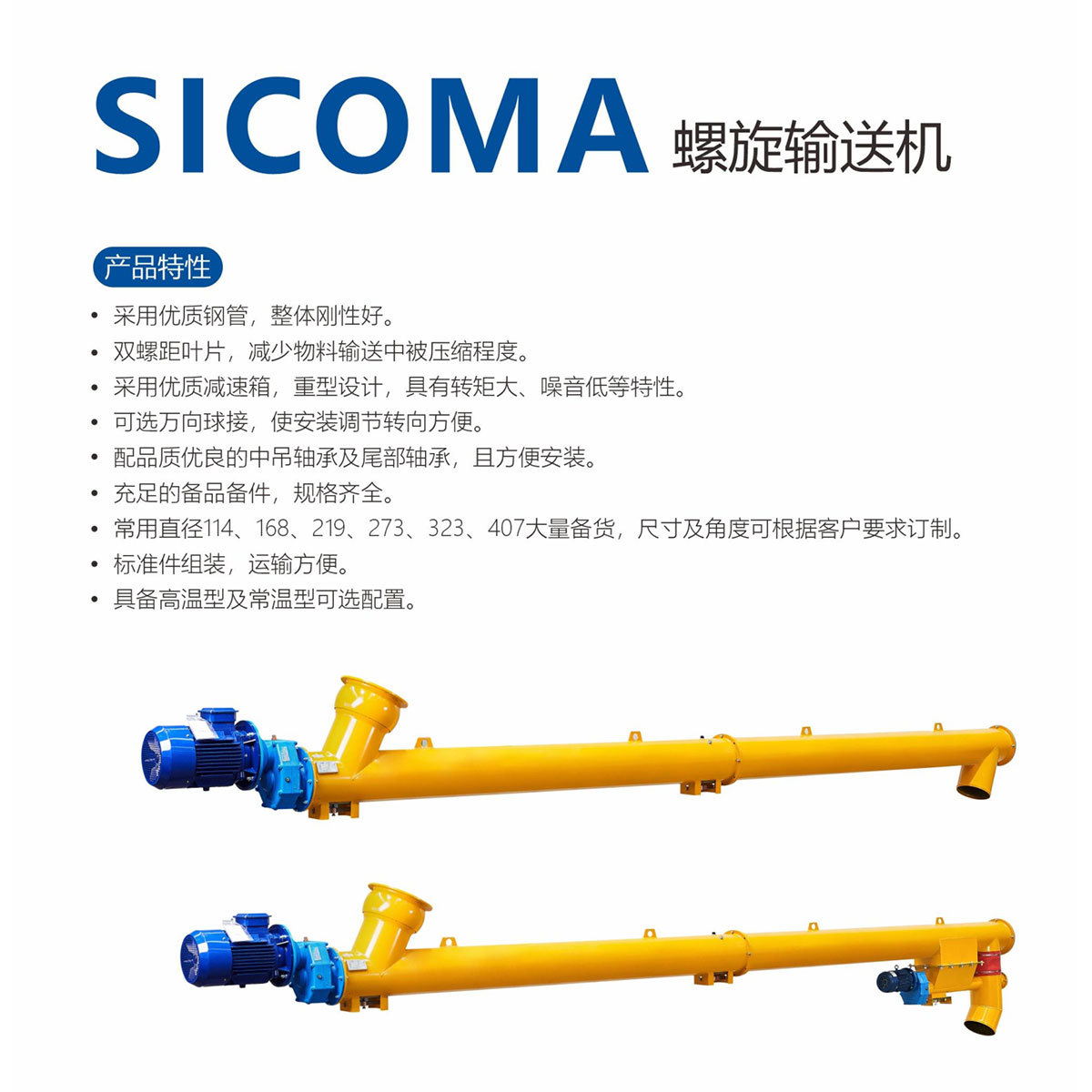Screw Conveyor: The Unsung Hero of Efficient Material Handling
At its core, a screw conveyor consists of a rotating helical screw blade, known as an auger, housed within a trough or pipe.
In the world of industrial material handling, where precision, efficiency, and reliability are paramount, one piece of equipment stands out as a workhorse—the screw conveyor. Often overshadowed by flashier machinery, this unassuming device plays a critical role in countless industries, from agriculture and mining to food processing and wastewater treatment. Its design, rooted in simplicity, belies its remarkable versatility and performance, making it a cornerstone of modern material transport systems.
At its core, a screw conveyor consists of a rotating helical screw blade, known as an auger, housed within a trough or pipe. As the auger turns, it moves materials along the length of the conveyor, whether horizontally, at an incline, or even vertically. This straightforward mechanism is the key to its success, offering a host of advantages that set it apart from other material handling solutions.
One of the most compelling benefits of a screw conveyor is its exceptional efficiency in moving bulk materials. Unlike conveyor belts that can suffer from slippage or require constant tension adjustments, the screw conveyor’s auger creates a positive displacement action, ensuring a consistent flow of materials regardless of their density or particle size. This makes it ideal for handling everything from fine powders like flour or cement to granular materials such as grains or plastic pellets, and even larger, irregularly shaped items like coal or wood chips. The result is minimized waste, reduced downtime, and a more streamlined production process.

Another standout feature is its versatility in installation and operation. Screw conveyors can be customized to fit into tight spaces or awkward layouts, thanks to their compact design and ability to be configured in horizontal, inclined, or vertical orientations. This flexibility allows them to integrate seamlessly into existing production lines, eliminating the need for costly and time-consuming facility modifications. Whether it’s moving materials from a storage silo to a mixing tank, transferring waste products to a disposal area, or feeding raw materials into a manufacturing process, the screw conveyor adapts effortlessly to diverse operational needs.
Durability and low maintenance requirements are also major selling points. Constructed from robust materials such as stainless steel, carbon steel, or even specialized alloys for corrosive environments, screw conveyors are built to withstand the rigors of heavy-duty use. The simplicity of their design means fewer moving parts, reducing the risk of mechanical failure and lowering maintenance costs. Routine upkeep typically involves little more than lubricating bearings and inspecting the auger for wear, ensuring that the equipment remains operational for extended periods with minimal interruptions.
In industries where hygiene is a priority, such as food processing or pharmaceuticals, screw conveyors shine with their easy-to-clean design. Many models feature smooth, seamless troughs and removable augers, allowing for thorough sanitization to meet strict regulatory standards. This eliminates the risk of cross-contamination and ensures that products remain pure and safe, a critical advantage in highly regulated sectors.
Energy efficiency is yet another area where screw conveyors excel. Their design requires less power to operate compared to many other material handling systems, especially when moving materials over short to medium distances. This translates to lower energy bills and a smaller carbon footprint, aligning with the growing emphasis on sustainable and eco-friendly industrial practices.
In conclusion, the screw conveyor is far more than just a simple piece of machinery—it is a vital component that drives efficiency, versatility, and reliability in material handling operations across a wide range of industries. Its ability to handle diverse materials, adapt to various layouts, and operate with minimal maintenance makes it an indispensable asset for businesses looking to optimize their production processes. Whether you’re in need of a solution for bulk material transport, process feeding, or waste management, the screw conveyor delivers consistent performance that stands the test of time. It’s no wonder that this unsung hero continues to be the preferred choice for engineers and operators seeking a material handling solution they can trust.
RELATED BLOG
Enhancing Construction Efficiency with Quality High Performance Concrete Mixers
In the manufacturing and processing machinery industry, specifically in the field of engineering and construction machinery, concrete mixers play a crucial role in the production of high-quality concr
Top 10 Best High Performance Concrete Mixers for Construction Projects
Discover the top-performing concrete mixers for your construction projects. From portable options to heavy-duty models, find the perfect mixer for your needs.
Unlocking the Secrets of High Performance Concrete Mixers
Discover the key factors that make a concrete mixer the best in terms of high performance. Dive into the world of manufacturing and processing machinery, specifically focusing on engineering and const
Maximizing Efficiency with Aerated Concrete Mixers: A Comprehensive Overview
Aerated Concrete Mixers are specialized equipment designed to create aerated concrete, a lightweight construction material known for its excellent insulating properties and strength. These mixers are essential in the manufacturing and processing machinery industry, particularly for applications involving concrete products. The core function of an aerated concrete mixer is to effectively blend raw
How Butterfly Valves Enhance Manufacturing Process Efficiency
How Butterfly Valves Enhance Manufacturing Process Efficiency Table of Contents 1. Introduction to Butterfly Valves in Manufacturing 2. Understanding Butterfly Valves and Their Mechanism 3. Key Benefits of Using Butterfly Valves in Manufacturing 4. Applications of Butterfly Valves Across Industries 5. How Butterfly Valves Improve Operational Efficiency 6. Cost Reduction St
Understanding Small Concrete Mixer Machines: Essential Insights for Professionals
Small concrete mixer machines have emerged as indispensable tools in various construction and manufacturing processes. These machines are designed to efficiently produce small batches of concrete, making them ideal for both residential and commercial projects. Understanding the features, benefits, and applications of small concrete mixer machines can help professionals make informed decisions when

